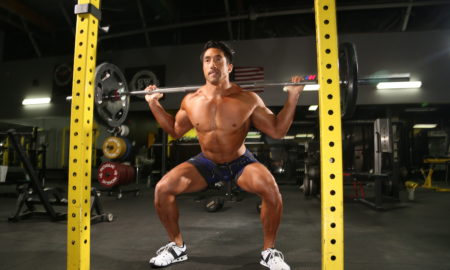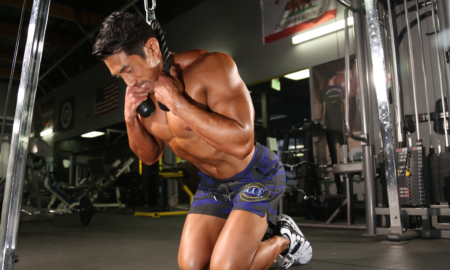Fads affect most fields, and exercise is certainly no exception. Late-night television is filled with ads for new training gimmicks and methods. Advertising companies spend much money pushing a product for a period of time until the sales slow down, and the product or method disappears only to be replaced by another fad, often with the same sales representative.
Some of the new ideas have a place in training, but often it has not been evaluated. Some ideas have no place in training. A recent idea that is gaining popularity comes under the former heading. It can have a place in training, as long as it’s not performed aggressively.
The exercise is described as a renegade row. It’s based on a traditional pushup but instead of having your palms on the floor, you are gripping a pair of light dumbbells. You perform a pushup, and at the top position you lift one dumbbell off the floor and perform a dumbbell row. Then you put the dumbbell back on the floor, drop to perform another pushup and at the top do a row with the other arm. You continue to alternate sides for the desired number of pushups.
What are the upside and downside of this row? The upside is that, yes, it can have a place in your training if you approach it with caution. That said, the first thing to ask yourself with any kind of training is, “Why am I doing this?” The renegade row is part of the trend in recent years toward exercises that stress “stabilization.” It will not exhaust the pectoralis major, deltoid and triceps as much as pushups or bench presses will. The limiting factor is the rotator cuff on the side that is holding up the body while the other arm performs the row. There is a tremendous stress on the rotator cuff to balance the body in a three-point top-pushup position—and the rotator cuffs will fatigue quickly from the demand. Yes, the abdominal and hip flexor muscles must stabilize the torso too, but the major load is on the rotator cuff.
So the downside of renegade rows is that the load on the rotator cuffs can cause a rotator cuff tear or exacerbate an existing tear that may not have been painful previously—even if you’re simply performing the exercise as described above.
Another factor is the old belief that “more is better.” I recently treated a patient who suffered from shoulder pain after working up to 35-pound dumbbells on the renegade row. That’s far too much stress on the rotator cuffs, especially as they fatigue during the set. The result has been long-lasting shoulder pain and the need to eliminate many other exercises during this painful period.
So before you add the renegade row to your training program, ask yourself why you need it. What was the progression of your training leading up to this exercise? If you can tolerate it, you must be careful not to do too much—too many sets and reps—too soon. If you’ve already developed shoulder pain from it, you may need to see a health care professional, meaning an orthopedic surgeon or board-certified chiropractic sportsmedicine specialist, to examine your shoulder. That is particularly true if you have shoulder weakness and night pain.
Not all exercises are good. Not all exercise modifications are good. And not every gimmick or so-called revolutionary system someone is selling on TV is worth your time and money. You must be cautious about making changes in your training due to boredom.
I have written, “Train smart; then train hard” in this column for decades. That still stands today. The fewer injuries you have, the more training you will perform and the greater gains you will achieve. Too much pain = no gain.
Editor’s note: Visit www.SoftTissueCenter.com for reprints of Horrigan’s past Sportsmedicine columns that have appeared in IRON MAN. You can order the books, Strength, Conditioning and Injury Prevention for Hockey by Joseph Horrigan, D.C., and E.J. “Doc” Kreis, D.A., and the 7-Minute Rotator Cuff Solution by Horrigan and Jerry Robinson from Home Gym Warehouse, (800) 447-0008 or at www.Home-Gym.com.




















You must be logged in to post a comment Login